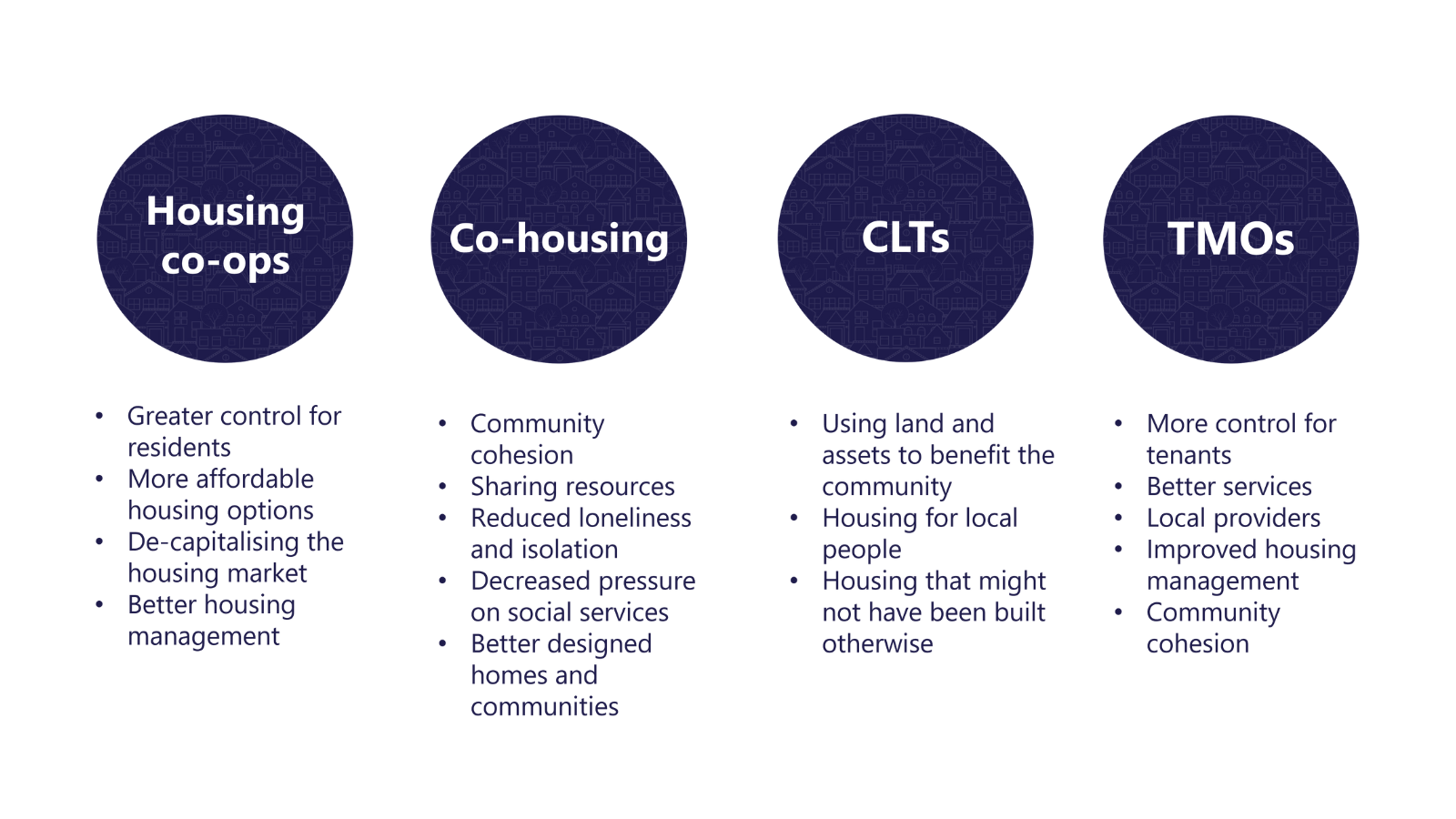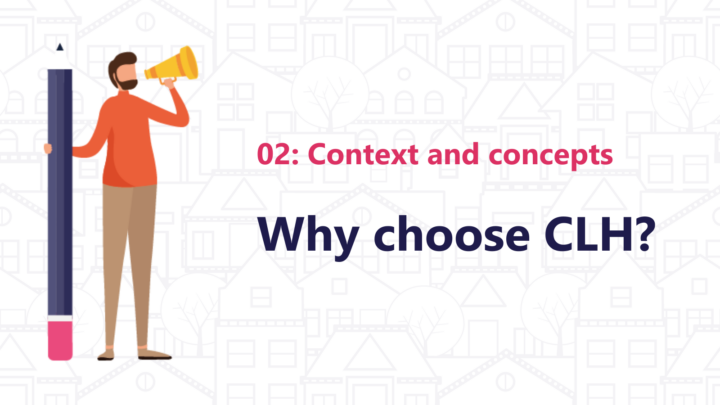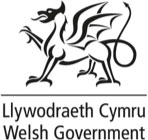Models of CLH

Housing co-operatives
Co-operatives are not-for-profit and democratic organisations run by and for the benefit of their members. Housing co-operatives collectively own or manage homes that are controlled democratically by their members, who are also residents. The co-operative approach works for both buying and renting, building new and converting empty properties.
There are several variations within the housing co-operative model, including:
- New build, e.g. Bunker Housing Co-op
- Shared properties, e.g. Golem Housing Co-op
- Ownership, e.g. Rainbow Housing Co-operative
- Rental/leasehold, e.g. La Borda Housing Co-operative
- Student housing co-ops, e.g. Edinburgh Student Co-op
Case study: Rainbow Housing Co-operative
- 24 terraced houses on one street in Milton Keynes
- Communal garden with natural pond and play area for children
- Established in 1977 when homes were threatened with demolition
- Membership is by application and prospective members are expected to participate in the activities of the co-op
- All members participate in decision making
- Co-op carries out most of property maintenance
Co-housing
Co-housing is a design methodology used by communities to create spaces that promote connectivity and togetherness. Each household has a self-contained, personal, and private home but there is also shared space where people can meet, socialise, eat together, and share resources.
Case study: Lancaster Co-housing
- 41 leasehold/rental homes built to Passivhaus standards
- Shared facilities: common house, food store, laundry, children’s play room, guest rooms, tool shed, bike shed, land and gardens, car club, pedestrianised streets
- Consensus decision-making
Community land trusts (CLTs)
Community land trusts (CLTs) are community-owned organisations run by their members, whose primary purpose is to provide and protect assets of community value, like housing. CLTs provide affordable homes for local people by acquiring land and holding it as a community asset in perpetuity. CLTs act as long-term stewards of housing, ensuring that it remains genuinely affordable, sometimes based on what people actually earn in their area – not just for now but for every future occupier.
Case study: Marshfield Community Land Trust
- 15 homes – 10 social rent, 2 shared ownership, 3 open market homes
- Rural exception site – green belt land in AONB
- Affordable homes will be built to Passivhaus standards
- Local lettings policy
- RSL partner: Brighter Places
Tenant management organisations (TMOs)
An organisation formed by tenants of social/affordable housing to take on the democratic management of their homes. Tenants can be involved in design and build, allocations, maintenance, community activities and much more.
Case study: Bushbury Hill EMB
- Manage over 1000 homes for the council and a Registered Social Landlord
- Large 1920s estate
- Now building additional homes to help with underoccupancy problems in the community
Benefits of community-led housing models

Note: Models and approaches are flexible, and hybrid combinations of models can be chosen by groups to fit their needs.












